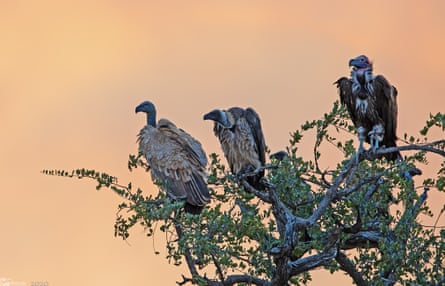A recent study has found that the population of birds of prey in Africa has significantly decreased, posing potential consequences for humans.
New analysis reveals that a number of tropical raptor species, such as the martial eagle, bateleur, and dark chanting goshawk, have disappeared from large portions of Africa in the last four decades due to the conversion of natural habitats into farmland. This trend may result in the local extinction of several African birds of prey in numerous countries by the end of this century.
A recent study published in the journal Nature Ecology and Evolution conducted road surveys to determine that almost 90% of the 42 raptor species assessed have undergone decreases, and over two-thirds show indications of being at risk on a global scale.
The University of St Andrews’ Dr Phil Shaw, who conducted the study, warned that the extinction of top predator bird species could have unforeseen impacts on humans. He pointed to the decrease in Indian vultures as an example, which resulted in an increase of rabies cases among humans in the 1990s.
The research discovered that large African birds of prey, capable of hunting jackals, antelopes, snakes, rodents, and smaller birds, are relying more on protected areas like national parks and reserves. Although some raptor populations also decreased in these areas, the decline was typically slower. The scientists emphasized the significance of achieving the UN goal of protecting 30% of the planet for nature by the end of the decade.

According to Shaw, although protected areas offer some level of protection, the decline of raptors within these areas is still significant. In certain cases, the decline is steep. In fact, our research shows that 40% of the 42 raptor species studied are experiencing a decline within protected areas that would classify them as endangered. Essentially, they have no other place to go for refuge.
Inspired by a 2015 study on African vultures, Shaw conducted further research on the endangered species and discovered the major threats of poisoning and persecution.
“We have examined 42 varieties of birds of prey, including vultures. Interestingly, we have discovered that several of the larger raptors are declining at a similar pace to the vultures,” he explained.
According to the study, the most significant decreases were observed in west Africa due to agricultural growth and inadequate funding for protected areas. Shaw cautioned that there may be unforeseen impacts in areas where raptors have vanished.
“The vultures play a vital role in their ecosystem by scavenging carcasses. In India, a similar decline in their population due to different factors resulted in a rise of feral dogs, especially in urban areas. This led to a significant increase in human cases of rabies, transmitted through dog bites,” stated the speaker.
-
Find more age of extinction coverage here, and follow biodiversity reporters Phoebe Weston and Patrick Greenfield on X for all the latest news and features
Source: theguardian.com


